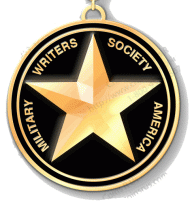Belle of the Brawl: Letters Home From a B-17 Bombardier
|
Book Information: |
Cover: |
Author's Summary
Belle of the Brawl chronicles the WW II experiences of a B-17 bombardier through the Plexiglas nose of his B-17. Based on the 150 letters the airman wrote home to his mom, much of the horrors of what he experienced off the wing of his plane, aircraft destroyed, dismemberment by flak, go unshared. He didn't want her to worry so he couldn't tell her, "I noticed some movement and a flash of light out of the corner of my right eye . . . the plane that had been flying right next to us had exploded and simply disappeared." Using the bombardier's combat flight record, research data, and interviews of former B-17 crewmembers, Belle of the Brawl unfolds, breaking through the barrier of an unwillingness and inability to tell loved ones of the smell and taste of the war. He and others wrote home in generalities but remembered something quite different. Flying over Berlin, circled with more than 700 antiaircraft cannons, the massive air armada of D-Day and the horrendous air battle over Brux are revealed and remembered long after the struggles of combat - After I got home, "I'd wake up screaming and the same FW would be coming after me."
MWSA Review
MWSA 2011 Honorable Mention for Military, Air Force

Gary A. Best's Belle of the Brawl is a wonderful portrait of the relationship between a boy and his mother, told through the letters of young Fred Lull as he writes home during his training and deployment as a B-17 bombardier. It describes a warm, emotional relationship, where a young man in harm's way continuously works to reassure his worried mother that he is just fine and plenty safe, even when the horrors of war surround him.
Best does a great job of interspersing the letters from Fred with notes,comments, and news clippings about the war at that time. This serves to both allow the reader to fix in history when the story occurred and also to contrast the harsh realities of war with the boy's club picture that Fred paints for his mother.
In addition to developing the picture of the relationship, the book does a wonderful job of painting a picture of what life was like in America during World War II. The reader learns about rationing, traveling in the United States, and how Americans worked to make ends meet in the 1940's.
This book is an excellent addition to any library, but will be especially enjoyed by military aviation buffs and World War II veterans.
Reviewed by: Rob Ballister (2011)



